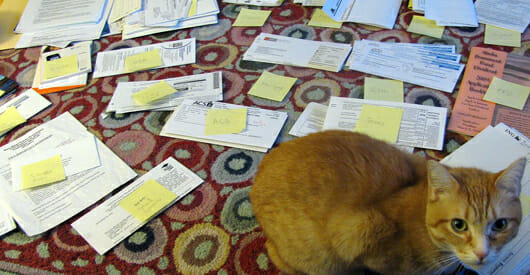
This is a blog post about blog posts, but it’s about a lot more than that, too.
Blogs are known as brawny content management systems. Categories create distinct collections of content based on similar subject areas. Category pages can be created dynamically. For instance, just clicking on one of the Topics in the right sidebar of this blog will create a page with a unique url, complete with links to all the content in that category stored in the blog’s database.
But we also have tags, which unite pieces of content through the keywords that apply to those pieces. The tags on this blog seem to have become invisible in my blog re-design, but they will be coming back. Tags collect content into aggregates based on keywords and the concepts they represent. It’s another dimension through which you can look at the material on any blog that uses tagging.
Blogs Also Define Their Own Weaknesses
The problem is, blogs often fail as content accessing systems. One of the things that makes a blog a blog is the “newest-on-top” way of stacking posts. As each new post appears, all the other posts are pushed down, farther and farther into the dark reaches of something called the “Archives.”
If you need something stored in the far reaches of those archives, only Saint Google can help you.
Our Own Content Management
Search boxes aren’t much help either. Most blogs are set up to show a “teaser” as part of the blog post, and only a few at a time. It’s an awkward interface if what you’re looking for is quick access to specific information.
Visiting blogs I’ve noticed some content-rich sites with directories front and center. As a user, it’s pretty user-friendly. Access to relevant content without resorting to the search box.
That’s why I have a new list of topics in my sidebar, courtesy of the Matt Chevy re-design. It’s called Start Here, over on the left.
My idea here is to build a core of resources immediately available to people searching for specific information. Looking at it from the point of view of someone near the beginning of this journey, I tried to think about the decisions self-publishers face when starting out. That seems to be where a lot of the confusion is.
As a self-publisher travels farther, they need other information about planning, about print choices, about specific activities or tasks they may be called on to take care of.
It’s getting to that information that’s behind this Start Here gizmo.
Mini-Aggregates of Useful Data
Obviously, the blog is still under reconstruction, I just misplaced the black and yellow tape, or sections would be taped off. But it can be fun to poke your head through the hole in the fence around the construction site and get a look at the nuts and bolts as the new edifice takes shape.
Most of the Start Here topics are almost empty. One that’s about half finished is Making Print Choices. Check it out.
My idea is to create pages that are almost mini-tutorials on each particular decision area, with links to the best, most educational articles for specifics on different topics.
I’m pretty excited about getting the blog set up so it’s easier and faster for visitors to use. And here’s why:
I think the explosion of interest we’ve seen over the last couple of years for self-publishing is only the beginning.
In fact, I believe we’re moving into a new era of participative media. In this era we’ll see the gradual merging of the interactive elements of Web 2.0 with increasingly digitized, democratized and demographically-identified media.
The expanding sphere that is social media will continue to grow. Blogs are a basic building block in the edifice that is rising around us. There are many places in the blogosphere that are still like the Wild West, where claims can be staked on territory never before touched by man.
We know it’s happening. We know we’re part of it. The better I make this little corner, the easier to use, the more delightful and rewarding to visit, the more people may come to love books in whatever form they take, elegant typography, clear and authentic writing, and I think the world might be a little better for that.
What do you think of my plan?
Takeaway: Staking out a territory online is no longer enough: It’s up to us to make our efforts accessible to the people for whom they are intended.


